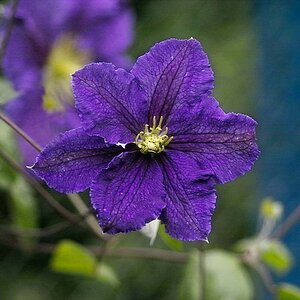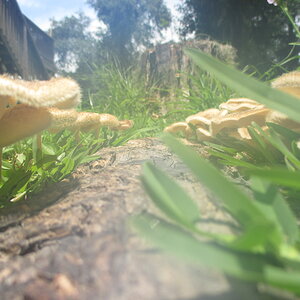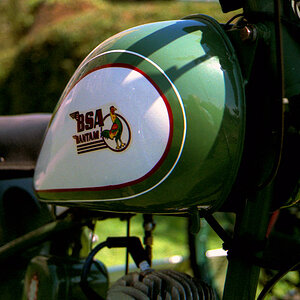Navigation
Install the app
How to install the app on iOS
Follow along with the video below to see how to install our site as a web app on your home screen.

Note: This feature currently requires accessing the site using the built-in Safari browser.
More options
You are using an out of date browser. It may not display this or other websites correctly.
You should upgrade or use an alternative browser.
You should upgrade or use an alternative browser.
How can I improve color saturation?
- Thread starter ismael
- Start date
I know that you can overexpose print film about one stop to increase color saturation.
The best filter i know of that will increase color saturation would be a polorizer, but with that filter you will lose two stops of light. :?
I believe with other filters you could emphasise certain colors but for overall color satuation i would use a polorizer, and/ or overexpose print film. (opposite for slide film, i dont shoot slide film so i could be wrong)
Your other option would be to use slide film, like fuji velveta or others. (much less forgiving than print film).
Hope this helps
The best filter i know of that will increase color saturation would be a polorizer, but with that filter you will lose two stops of light. :?
I believe with other filters you could emphasise certain colors but for overall color satuation i would use a polorizer, and/ or overexpose print film. (opposite for slide film, i dont shoot slide film so i could be wrong)
Your other option would be to use slide film, like fuji velveta or others. (much less forgiving than print film).
Hope this helps
- Joined
- May 15, 2003
- Messages
- 5,275
- Reaction score
- 17
- Location
- Gilbert, AZ
- Website
- www.voodoocat.com
- Can others edit my Photos
- Photos NOT OK to edit
photoman said:like fuji velveta
 I'm picturing film made with velveta cheese
I'm picturing film made with velveta cheeseFuji Velvia is what you're thinking about.
ksmattfish
Now 100% DC - not as cool as I once was, but still
- Joined
- Aug 25, 2003
- Messages
- 7,019
- Reaction score
- 36
- Location
- Lawrence, KS
- Website
- www.henrypeach.com
- Can others edit my Photos
- Photos NOT OK to edit
To increase color saturation over-expose print (neg) film by up to one stop or under-expose slide (positive) film 1/3 or 1/2 stop.
Direct light, like the sun, increases color saturation. Unfortunately plants usually have a waxy coating to keep from drying out. This creates a lot of glare in the direct sun, so instead of getting the saturated color, you get some white glare which washed out the colors.
A polarizing filter will significantly reduce glare in your photos leaving the saturated color. A polarizing filter must be adjusted for every shot; read the instructions that come with it.
If you have an auto-focus camera be sure to get a circular polarizer. The other kind of polarizer is called linear, and only works when manually focusing.
As mentioned, a pol filter does block two to three stops of light, use a tripod and cable release if your shutter speed drops to low. It's worth it!!!
Many folks only use a polarizer on sunny days, but it works great on overcast days too. The effect is subtle looking through the lens, but in the photos it is very noticable (dull, blue green foliage turns to lush, bright green foliage).
I shoot mostly BW, but if I'm shooting color landscapes or botanicals I ALWAYS use a polarizer.
Fuji Velveeta does have it's own particularities, and using a polarizer with it will get you super saturated (possibly unnatural) colors, which you may find "cheesy".
Direct light, like the sun, increases color saturation. Unfortunately plants usually have a waxy coating to keep from drying out. This creates a lot of glare in the direct sun, so instead of getting the saturated color, you get some white glare which washed out the colors.
A polarizing filter will significantly reduce glare in your photos leaving the saturated color. A polarizing filter must be adjusted for every shot; read the instructions that come with it.
If you have an auto-focus camera be sure to get a circular polarizer. The other kind of polarizer is called linear, and only works when manually focusing.
As mentioned, a pol filter does block two to three stops of light, use a tripod and cable release if your shutter speed drops to low. It's worth it!!!
Many folks only use a polarizer on sunny days, but it works great on overcast days too. The effect is subtle looking through the lens, but in the photos it is very noticable (dull, blue green foliage turns to lush, bright green foliage).
I shoot mostly BW, but if I'm shooting color landscapes or botanicals I ALWAYS use a polarizer.
Fuji Velveeta does have it's own particularities, and using a polarizer with it will get you super saturated (possibly unnatural) colors, which you may find "cheesy".
bogleric
TPF Noob!
voodoocat said:photoman said:like fuji velvetaI'm picturing film made with velveta cheese
Fuji Velvia is what you're thinking about.
The worlds first edible negatives, how cool..... 8)
- Joined
- Sep 2, 2003
- Messages
- 34,539
- Reaction score
- 7,563
- Location
- In the mental ward of this forum
- Can others edit my Photos
- Photos NOT OK to edit
photoman wrote:
like fuji velveta
I'm picturing film made with velveta cheese
Fuji Velvia is what you're thinking about.
mmmmm, can I have some wine with this film?
tr0gd0o0r
TPF Noob!
- Joined
- Jun 29, 2003
- Messages
- 942
- Reaction score
- 4
- Location
- Shreveport, Louisiana
- Can others edit my Photos
- Photos OK to edit
I feel like a real moron asking this, but i've noticed that all cameras have different f-stops and aperture settings. I was wondering what exactly 1 stop is defined as. I assume that adjusting either aperture or shutter speed one "click" one be a stop, but some of my cameras have different settings so how does that work?
I dont know exactly what these settings are?
But one stop increase would be decreasing the light entering the camera by half (i.e. F 2.8 to F 4). (Much like increasing the shutter speed by one click will decrease the light by half)(i.e. 1/60th to 1/125th)
These other settings may be inbetween settings, like 1/3 of a stop or 1/2 of a stop.
Hope this helps
But one stop increase would be decreasing the light entering the camera by half (i.e. F 2.8 to F 4). (Much like increasing the shutter speed by one click will decrease the light by half)(i.e. 1/60th to 1/125th)
These other settings may be inbetween settings, like 1/3 of a stop or 1/2 of a stop.
Hope this helps
ramjamband
TPF Noob!
Take a look at the following list copied from my new book I got for Christmas.
Clear blue sky, Orange 85b
Open shade summer sun, 81b
Overcast sky, 81c
Early AM or late PM, Blue 82c
One hour before sunset, Blue 80c
Sunset, Blue 80a
Might try a few myself.
Have fun.
RJ.
Clear blue sky, Orange 85b
Open shade summer sun, 81b
Overcast sky, 81c
Early AM or late PM, Blue 82c
One hour before sunset, Blue 80c
Sunset, Blue 80a
Might try a few myself.
Have fun.
RJ.
ksmattfish
Now 100% DC - not as cool as I once was, but still
- Joined
- Aug 25, 2003
- Messages
- 7,019
- Reaction score
- 36
- Location
- Lawrence, KS
- Website
- www.henrypeach.com
- Can others edit my Photos
- Photos NOT OK to edit
tr0gd0o0r said:I feel like a real moron asking this, but i've noticed that all <a href="http://0-2u.com?go=cameras" onmouseover="window.status = 'goto: cameras';return 1" onmouseout="window.status=''">cameras</a> have different f-stops and aperture settings. I was wondering what exactly 1 stop is defined as. I assume that adjusting either aperture or shutter speed one "click" one be a stop, but some of my <a href="http://get-faster.com?go=cameras" onmouseover="window.status = 'goto: cameras';return 1" onmouseout="window.status=''">cameras</a> have different settings so how does that work?
One stop is a halfing or doubling of the amount of exposure.
Standard apertures in one stop increments are f/: 1, 1.4, 2, 2.8, 4, 5.6, 8, 11, 16, 22, 32, 45, 64, 90, 128, 180, 256....
Manual focus SLRs usually had 1/2 stop clicks between these numbers on the aperture ring on the lens. Modern AF SLRs run everything on their fancy computer brains, eliminating the need for a standard, therefore you can see many "odd" f/stop numbers displayed in the viewfinder; they just do the math for each setting (focal length divided by aperture size in mm equals f/stop).
Standard shutter speeds in one increments are 1 (1 second), 2 (1/2 second), 4 (1/4 second, etc...), 8, 15, 30, 60, 125, 250, 500, 1000, 2000, 4000, 8000, 16000....
Old time shutters sometimes had different speeds, but most <a href="http://get-certified.net?go=cameras" onmouseover="window.status = 'goto: cameras';return 1" onmouseout="window.status=''">cameras</a> built since the 60's had the above mentioned settings and maybe 1/2 or 1/3 stop clicks in between.
Similar threads
- Replies
- 12
- Views
- 148
- Replies
- 2
- Views
- 178
- Replies
- 13
- Views
- 205
- Replies
- 1
- Views
- 389


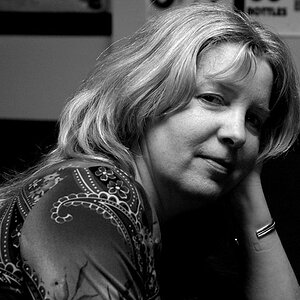
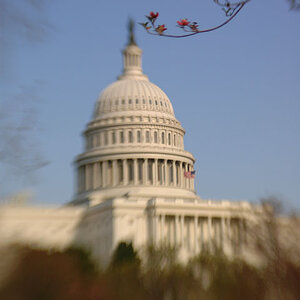

![[No title]](/data/xfmg/thumbnail/39/39187-9ec2507d9e5ef2843f7f00127c7abb4c.jpg?1619738905)
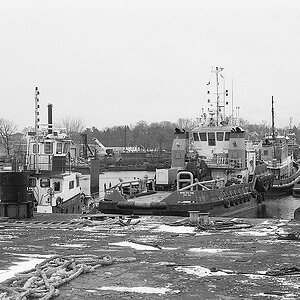

![[No title]](/data/xfmg/thumbnail/34/34115-73b827c6a6db1413dcead11e4caaae69.jpg?1619736285)


